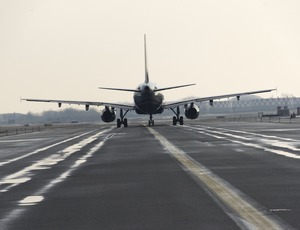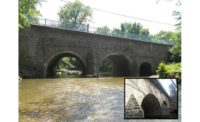
The Philadelphia city controller is at odds with a local contractor and the city's Division of Aviation over a 2009 taxiway repaving project at the Philadelphia International Airport.
During an October 2011 closeout walk-through at the airport, the controller's office determined Taxiway S, which had been repaved two years earlier, was rutting. The controller claims the contractor, A.P. Construction, Philadelphia, did not use the asphalt specified in its contract. So, the controller will not release a $65,000 payment to the contractor.
"The city paid for materials that did not meet contract and industry standards," said Alan Butkovitz, Philadelphia controller. "We discovered significant rutting on Taxiway S after only two years of having the new asphalt installed."
Butkovitz claims the rutting has created a safety concern. "Most of the rutting contains water, and if it were to freeze, a plow would not be able to remove ice from the rut," he added.
The controller reasserted this concern in a March 14 letter to Mark Gale, chief executive officer of the Division of Aviation, adding it would take "at least $300,000 to properly complete the project, which we would require A.P. Construction to pay so that another contractor can adequately complete the work."
A.P. Construction filed a complaint against the city in January, seeking the $65,000 payment, plus 10% in statutory interest. The firm's attorney, Christopher McCabe, did not return telephone calls from ENR.
However, the Division of Aviation does not agree with the controller's assertions, says Victoria Lupica, spokeswoman for the airport. "The difference of opinion is that the controller believes the contractor is responsible, and the airport does not believe the contractor is responsible," she said, adding that all its runways and taxiways meet established criteria and are safe for use. Lupica says the airport inspects all surfaces three times a day.
Both the controller and the airport disagree with findings of a March 2012 report that investigated the taxiway repaving work. The report, prepared for the airport by Applied Pavement Technology (APT), Urbana, Ill., noted significant differences between the hot-mix asphalt (HMA) that was designed in the lab and in-place asphalt that was tested in 2011.
APT observed that, although the asphalt content and aggregate gradation generally met specifications, it had dangerously low air voids.
"In 2011, the HMA has aged and hardened, so one would think the recompacted air-void results would be higher than they were at the time of construction, but they were in fact significantly lower," according to the report. "Although the cause for this considerable difference is not entirely known, the 2011 volumetric test results for the in-place material indicates the HMA has a great risk for rutting."


Post a comment to this article
Report Abusive Comment